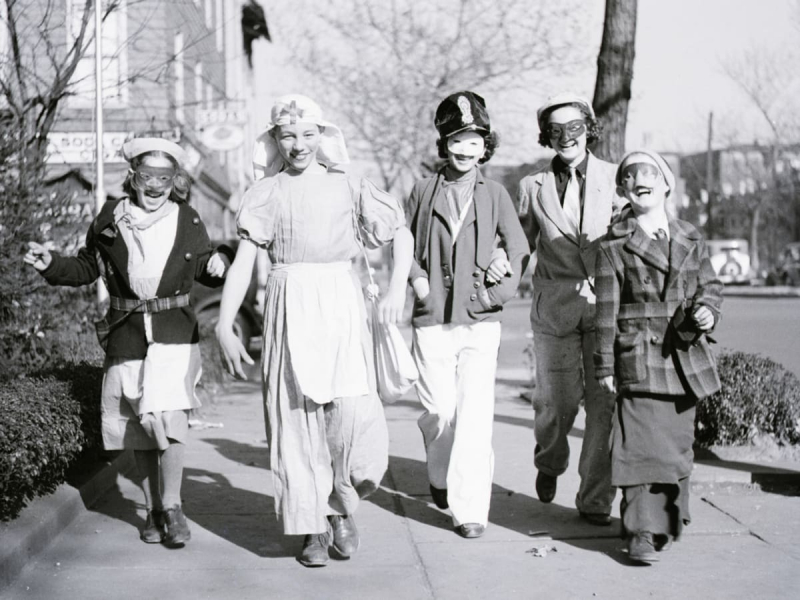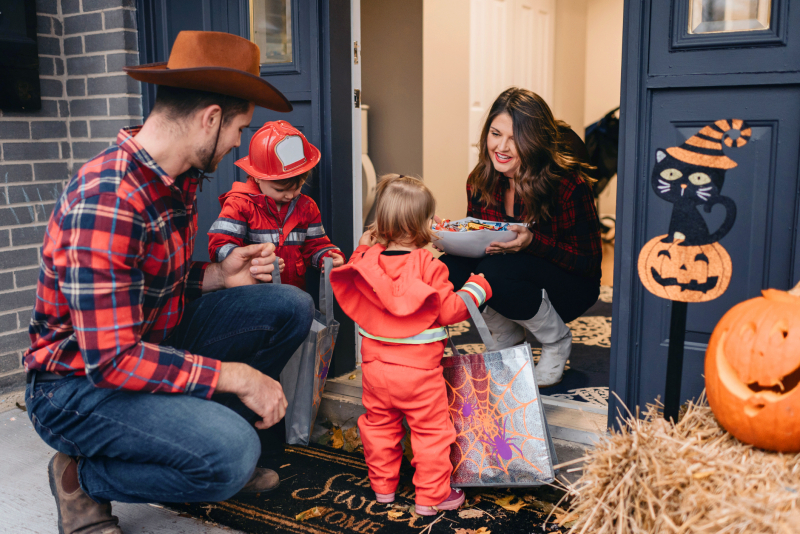History of Trick-or-Treating

Top 3 in Top 8 Things to Know about Halloween
Borrowing from European traditions, Americans began dressing up in costumes and going door to door asking for food or money, a practice that evolved into today's "trick-or-treat" tradition. Young women believed that by performing tricks with yarn, apple parings, or mirrors on Halloween, they could divine the name or appearance of their future husband.
In the late 1800s, there was a movement in America to make Halloween a holiday about community and neighborly gatherings rather than ghosts, pranks, and witchcraft. Halloween parties for both children and adults became the most popular way to celebrate the holiday around the turn of the century. Parties centered on games, seasonal foods, and festive costumes.
Newspapers and local authorities urged parents to remove anything "scary" or "grotesque" from Halloween celebrations. By the start of the twentieth century, Halloween had largely lost its superstitious and religious connotations as a result of these efforts.









